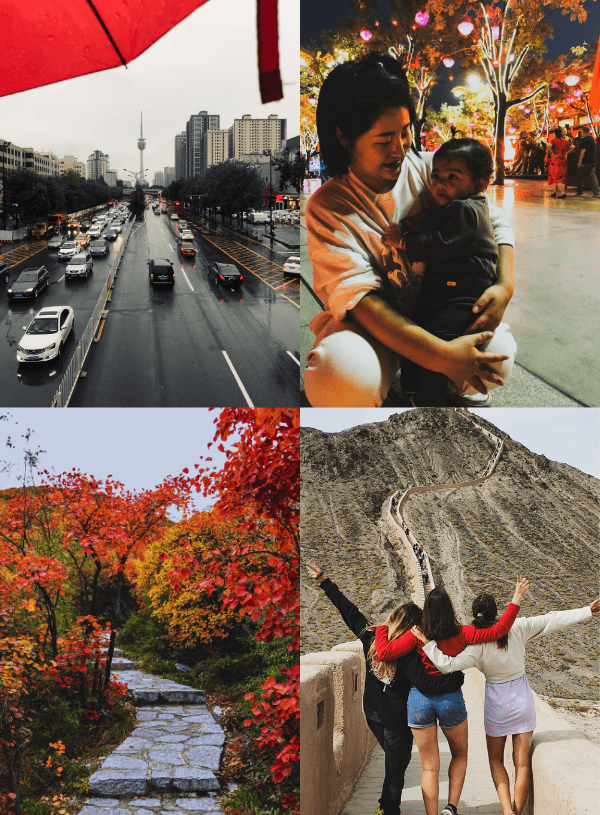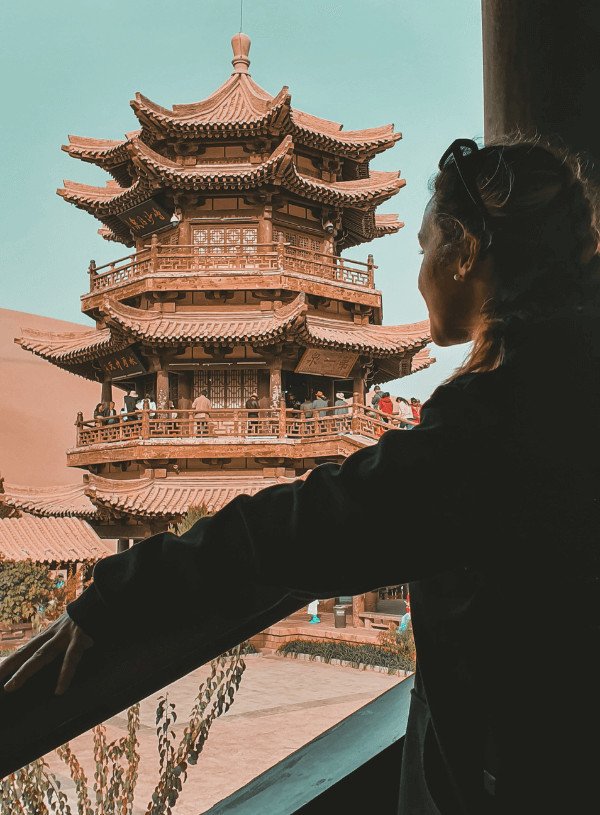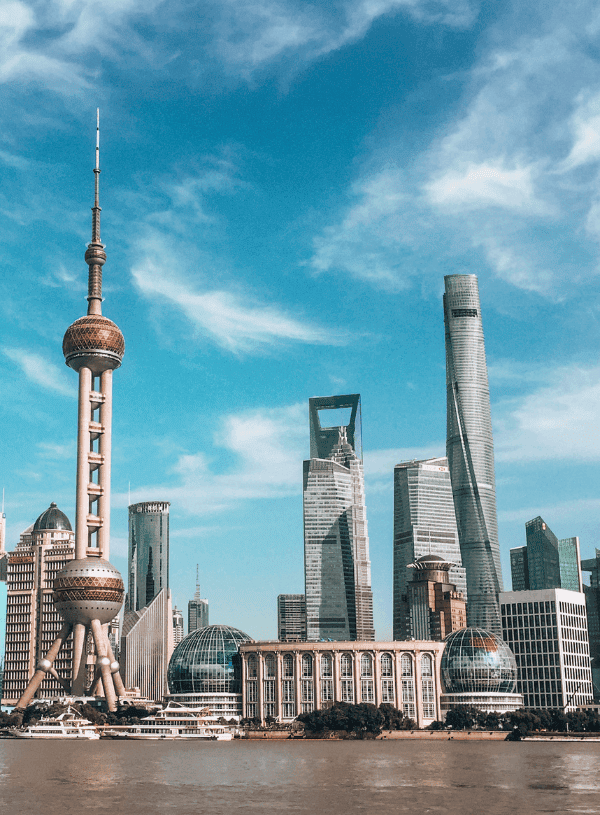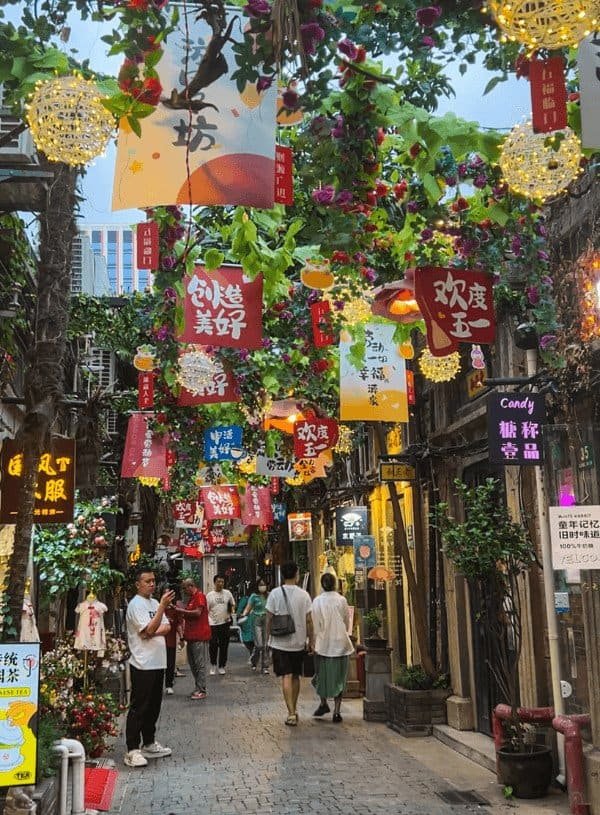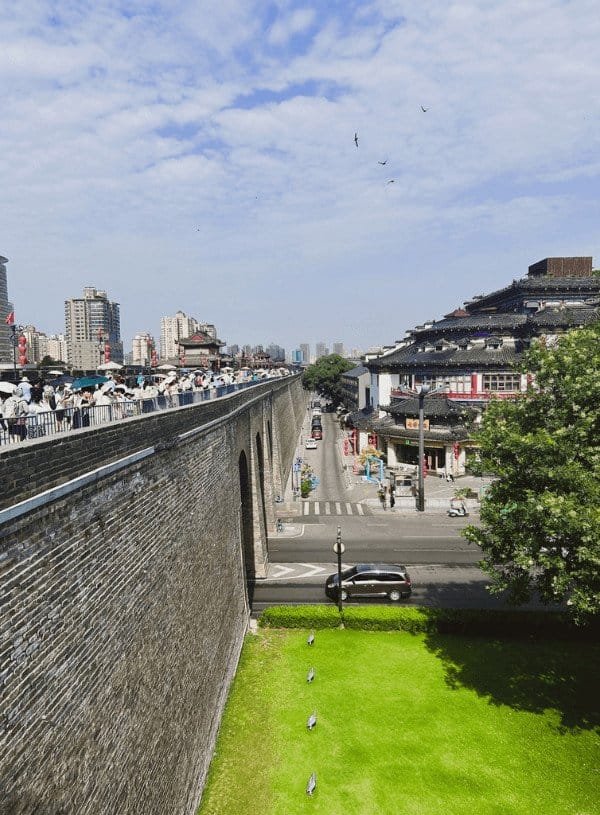Are you around the Shanghai area and looking for a way to extend your trip? Nanjing is seriously so underrated. As one of China’s four ancient capitals, it’s full of history with its impressive city walls, old gates, and the remains of the Ming Palace.
But what I loved most was the vibe. It’s so much more peaceful than Shanghai, way more affordable, and there’s plenty of nature around too, like the Purple Mountain and Xuanwu Lake. And it’s honestly one of the cleanest cities I’ve been in China.
So if you’re wondering whether it’s worth a stop, I’d say 100% yes. You might end up loving it more than you expect. In this blog post, I’ll walk you through how to plan your 3-day itinerary in Nanjing and what to see while you’re there.
This article may contain affiliate links. This means that if you purchase through one of the links, I may be paid a small commission at no extra cost to you. Thank you for supporting the blog, allowing me to share meaningful travel experiences with you.
Don’t have time now?📌 Pin it for later
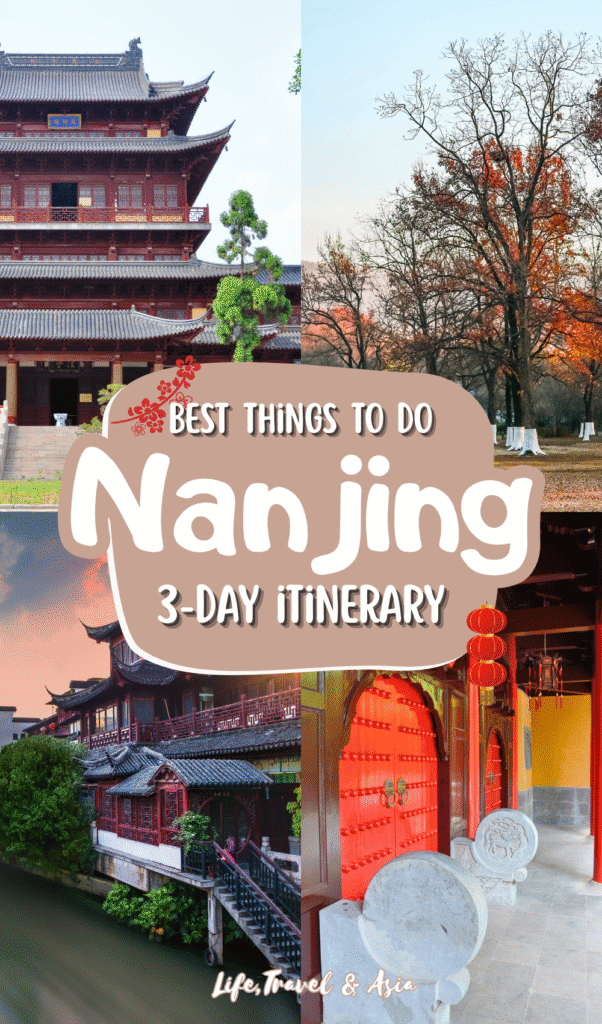
Is Nanjing Worth Visiting?
Nanjing is probably one of the most underrated cities in China. Its unfortunate location between Beijing and Shanghai often leads travelers to skip it in favor of these more famous cities.
Yet, its position along the lower Yangtze River and its history as the capital during the Ming Dynasty and the early Chinese Republic under Sun Yat-sen make it one of China’s most captivating cities.
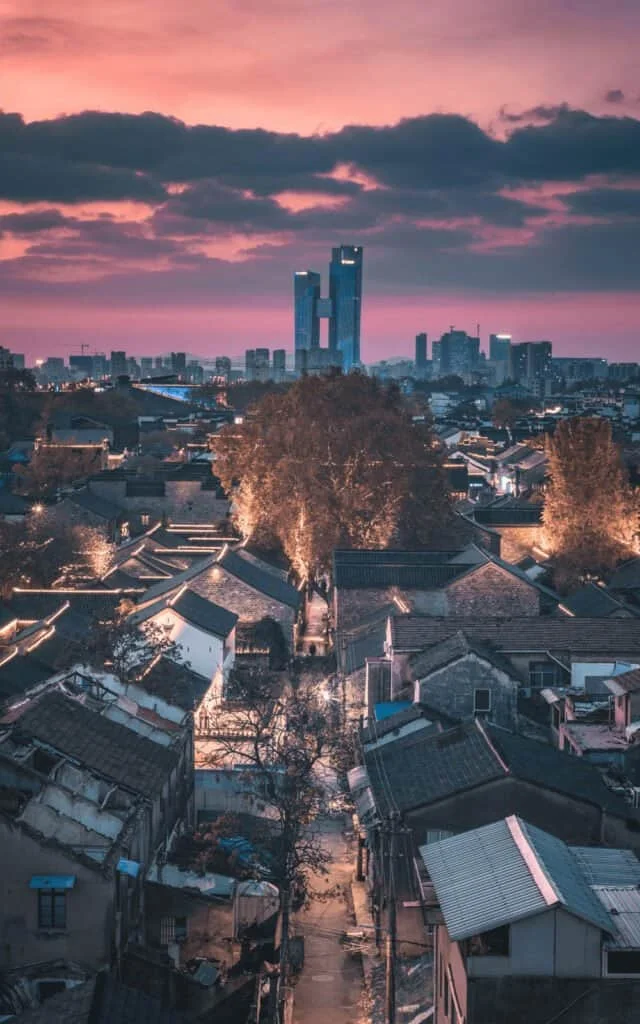
Additionally, it’s considered one of the cleanest cities in China (and I can confirm it) which is always a bonus.
In Nanjing, you’ll love the relaxed atmosphere typical of a university town. Its streets are lined with plane trees, there are peaceful lakeside areas, and cozy restaurants and cafes where you can sip Chinese tea. So yes, Nanjing is definitely worth a stop on your journey between Beijing and Shanghai!
Planning Your Nanjing Itinerary
1. Key Things to Know
2. Best Time to Visit Nanjing?
Nanjing is in Jiangsu Province, just a couple of hours from Shanghai by high-speed train. The best times to visit are spring (March to May) and autumn (late September to early November), when the weather is cool and the parks and historical sites are at their best.
Avoid the first week of October if possible (Golden Week), as it’s a national holiday in China and you are likely to encounter crowds.
I visited in early October, and it was perfect. Summers in Nanjing can be extremely hot, with high humidity and temperatures over 35°C, while winters are chilly and grey, but still manageable.
That said, autumn is hands-down my favorite time to explore Nanjing. Walking along the ancient city walls, wrapped in that cozy autumn feeling and surrounded by golden leaves, is one of my favorite memories from the trip.
3. How Many Days in Nanjing?
I’d say three days in Nanjing is the perfect amount of time. Two days give you plenty of time to explore the city itself, but you’ll want at least half a day to check out Purple Mountain and all the historical sights scattered around it.
Rushing through Nanjing would be a shame, there’s so much to see, and part of the charm is taking your time to explore it and even aimless wandering around the city.
4. How to Get to Nanjing?
Getting to Nanjing is very easy, especially if you’re coming by high-speed train. I always book my tickets on Trip.com, it’s my go-to for train travel in China because it’s simple to use, even if you don’t speak Chinese. You’ll likely arrive at the Nanjing South Railway Station.
From Beijing, expect around four and a half hours on the train. If you’re coming from Shanghai, it’s just about 2 hours, and from Suzhou, only around 1 and a half. Perfect for a quick trip or a weekend getaway!
Also, once you arrive, getting around Nanjing is easy. The city has a convenient metro system, but honestly, many of the main sights are walkable or just a short taxi ride away.
5. Where to Stay in Nanjing?
In Nanjing, you’ve got two main options for where to stay. The first one is downtown, in the Xinjiekou district. It’s super convenient if you want to be close to shopping malls, restaurants, and well-connected to the main sights and the train station.
The second one is around the Confucius Temple and Qin Huai River area, which is honestly such a vibe, especially at night. The streets light up, there’s so much street food, and loads of things going on. That’s actually where we stayed, and it was perfect. We just had to step outside the hotel to find food, lights, and fun literally right there.
SSAW Boutique Hotel Nanjing Grand Theatre: If I had to choose a hotel in Nanjing, this would be the one I’d go for. The location is fantastic—super close to the Confucius Temple but tucked away from the noisy main roads. The breakfast is a mix of Chinese and Western options, and the staff is honestly so kind and helpful. They go out of their way to make you feel welcome.
Nanjing Central Hotel: If you’re after an elegant and classic-style hotel with the most generous breakfast in the heart of the city, this one’s a winner. Nanjing Central Hotel is right in the middle of everything, super convenient with a subway station just around the corner.
If you’re looking for more details on traveling to China, here’s my travel guide. You’ll find everything from visa requirements and the best times to travel to tips on language, etiquette, and so much more.
Nanjing 3 Days Itinerary
This itinerary is a mix of historical sights that remind you of Nanjing’s past as an ancient capital, and some nature spots to balance it all out. I’ve also added a few extra things to do in and around Nanjing in case you end up staying more than three days.
Tickets & Tours in Nanjing
Day 1: Presidential Palace, Nanjing Museum & City Walls
1. Nanjing Presidential Palace
⏰ Visit Time: 1-2 hours
🏷️ Ticket Price: 35 ¥. Make sure to bring your Passport.
Ⓜ️ How to Get There: Take the closest subway line to Daxinggong
If you’re into Chinese history, this Nanjing Presidential Palace is an absolute must.
After the Taiping Rebellion, the so-called Mansion of the Heavenly King was built on the foundations of a former Ming-style palace. Later on, it became what is now known as the Presidential Palace and served as the office of the President of the Republic of China from 1927 to 1949.
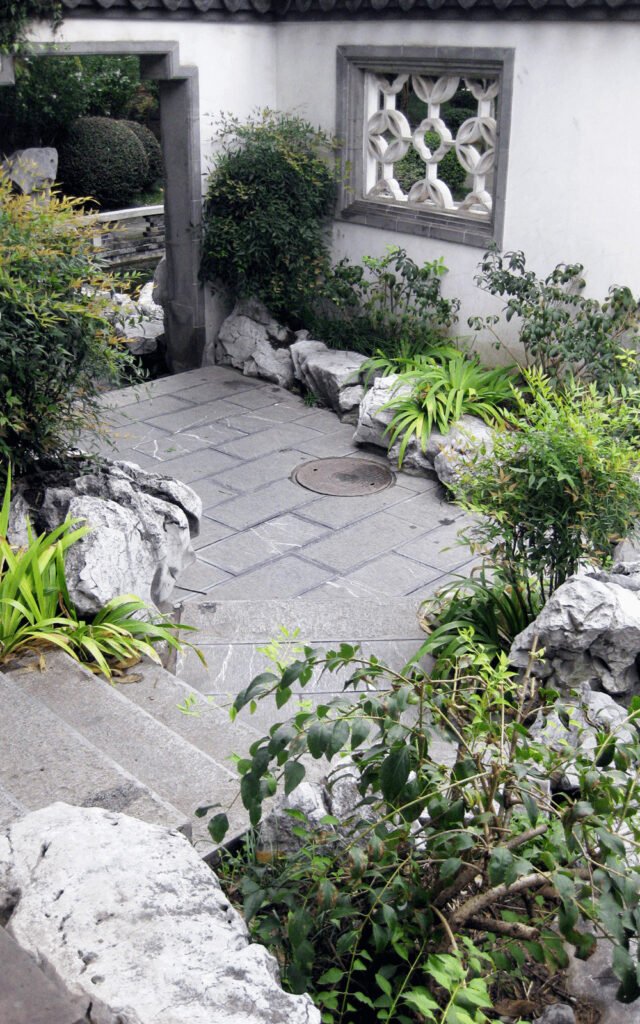
The complex is divided into three main areas: the central section, with its presidential hallways and offices; the west section, also known as the West Garden; and the east section, which is currently used for temporary exhibitions showcasing historical documents and records.
The whole place is surrounded by a beautiful Ming-style garden that you can stroll through—it’s especially lovely in spring! This last area was my favorite to explore.
Unfortunately, the signs within the Palace are all written in Chinese, so if you want to make the most of your visit, it’s a wise choice to visit the site with a guide.
2. Nanjing Museum
⏰ Visit Time: 3 hours
🏷️ Ticket Price: Free. Head to the ticket office at the right side of the entrance, where they will check your passport.
Ⓜ️ How to Get There: From Daxinggong subway station, take subway line 2 to Minggugong, then walk to the museum for about 10 minutes.
If you’re into museums and love getting lost among impressive displays, the Nanjing Museum is one of the largest in all of China.
It holds the most extensive collection of Ming and Qing porcelain, paintings, ancient calligraphy, and Buddhist Sutras you’ll find in the country.
Don’t miss the underground section—the Gallery of the Republican Period gives you a glimpse of Nanjing in the 1930s, with recreated old shops and streets that make it feel like a bit of time-travel experience.
The museum is so big you’d honestly need two half-days to see it all properly. I recommend getting the English audioguide at the entrance; it makes the visit way more engaging and helps you understand what you’re looking at.
3. Nanjing City Walls
🏷️ Ticket Price: From 10¥ to 30¥, depending on the section.
Ⓜ️ How to Get There: From Fuzi Miao, it’s a 20-minute walk to the Zhonghua Gate (South Gate)
Cycling or hiking along the Nanjing City Walls is the perfect way to enjoy the beautiful scenery around the city, including Xuanwu Lake and Purple Mountain.
In the 1400s, the Nanjing City Walls were the longest in the world, protecting the city within. Today, several sections of these historic walls remain intact.

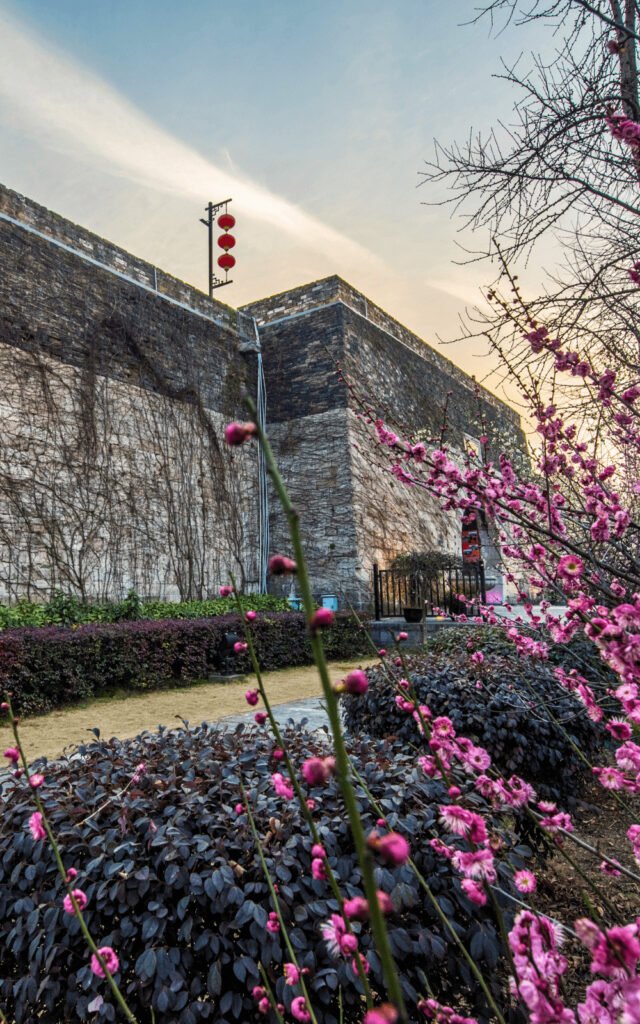
Zhonghua Gate is an ideal starting point for your hike. It’s one of the 13 gates that once served as entrances to Nanjing. With its connecting spaces leading to the wall, it looks more like a palace than a simple gate.
From Zhonghua Gate, you can make your way to Dongshui Guan. If you’re up for a longer walk, you can continue to the Wu Gate, about an hour away, where you’ll pass through the former Ming Imperial Palace ruins.
Day 2: Purple Mountain & Fuzi Miao
4. Purple Mountain (Zijin Mountain)
⏰ Visit Time: More than half a day
Purple Mountain gets its name from the golden and purple hues that light up its trees at dawn and dusk. It’s a stunning and rich natural site that includes four main scenic areas, where you’ll find most of Nanjing’s historically significant buildings.
Buses can take you from one scenic area to another, with a single ticket costing around 10¥. While there’s plenty to explore beyond the main scenic areas, the most significant sights are below.
Ming Xiaoling Tomb
This mausoleum, the burial place of the founder of the Ming Dynasty, Yuanzhang, and his Empress, represents the finest example of Ming architecture. It even inspired the design of similar structures built in later periods.

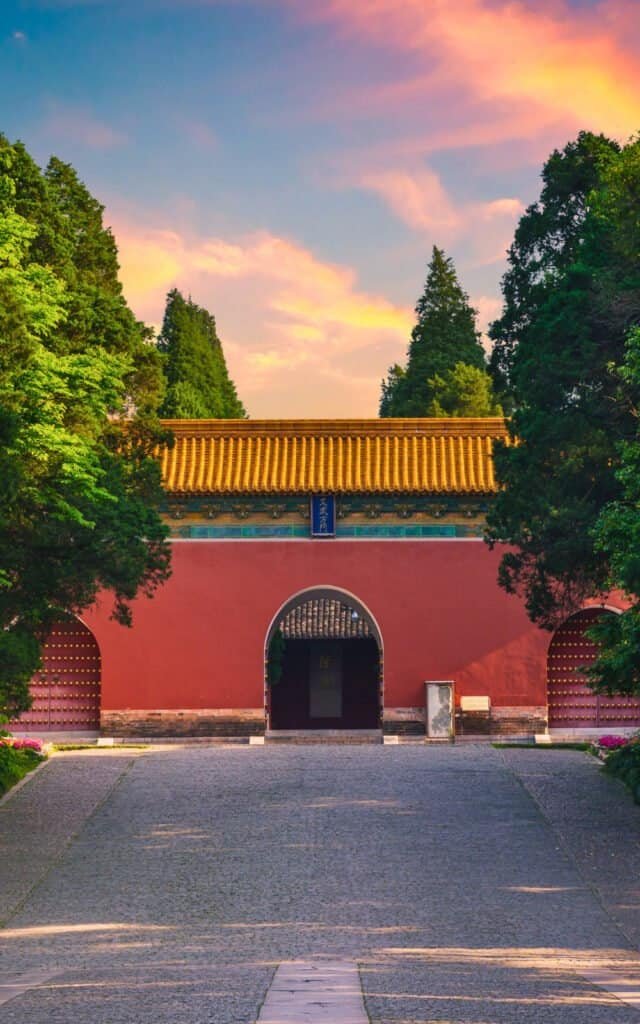
If you visit early in the morning, you can truly experience the spiritual atmosphere, especially along the hopefully quiet Spirit Path. This path, lined with stone statues of lions, camels, elephants, and horses, was meant to guard the tomb from evil spirits.
At the end of the Spirit Path, you’ll pass through a series of halls and a temple before arriving at the tomb. If you’re visiting in spring, don’t miss Plum Blossom Hill, just south of the Mausoleum. From mid-February to mid-March, the Plum Blossom Festival takes place here.
Sun Yat Sen Mausoleum
Sun Yat-sen Mausoleum is one of the top spots on Purple Mountain, and it’s easy to see why.
It’s a favorite among Chinese visitors and history enthusiasts who come to pay their respects to Sun Yat-sen, the Father of Modern China and a key figure in creating the first Chinese Republic.
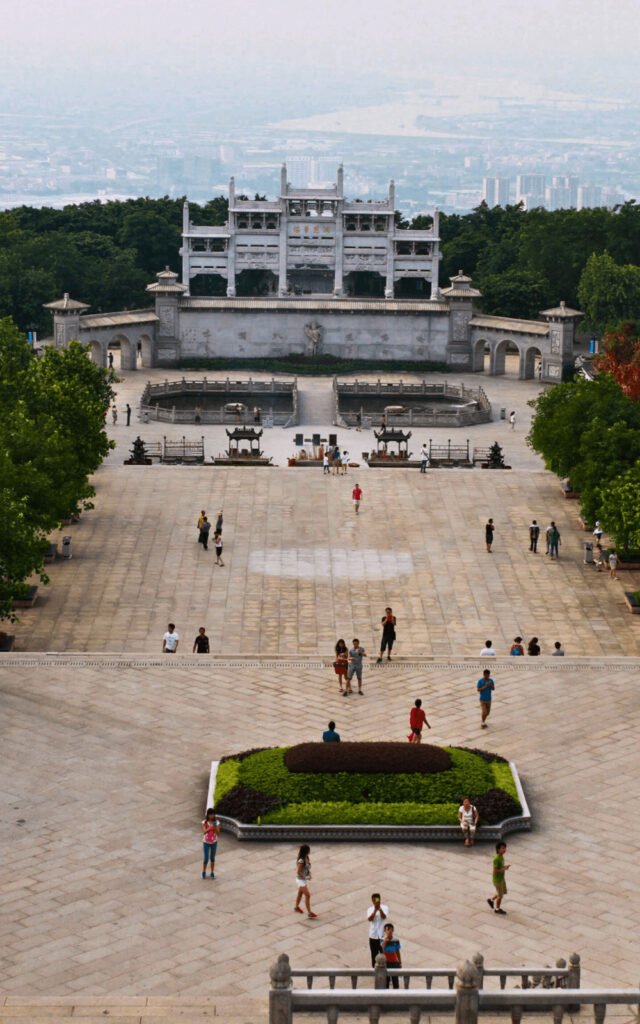
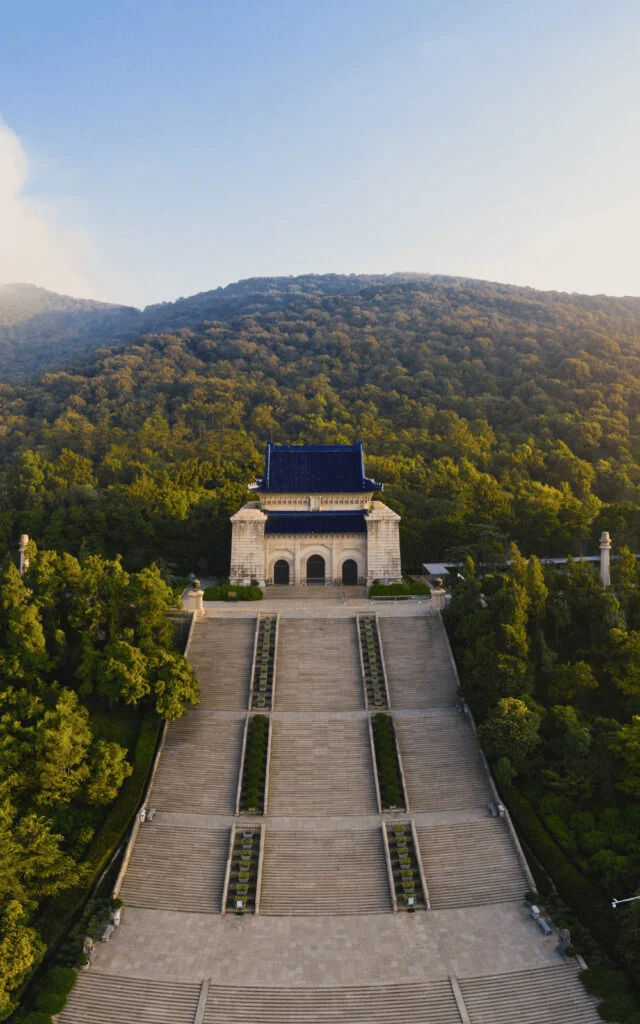
The mausoleum itself is stunning. It combines traditional imperial tomb style with modern architecture, set on a mountain slope. You’ll start your visit with a long staircase. At the bottom, you’ll see the impressive three-arch marble gate, the official entrance to the site.
As you make your way up, the Sacrificial Hall stands more than 700 meters away. It’s the central part of the mausoleum and looks incredible against the backdrop of the mountain.
Linggu Temple Scenic Area
The Linggu Temple Scenic Area is perfect for enjoying beautiful views surrounded by ancient trees that seem to hold past stories.
This Buddhist temple is located east of the Sun Yat-sen Mausoleum and gives a calm and historic vibe.
One of the main highlights is the Memorial Hall dedicated to Xuanzang, the monk who traveled to India and brought back the Buddhist Sutras.
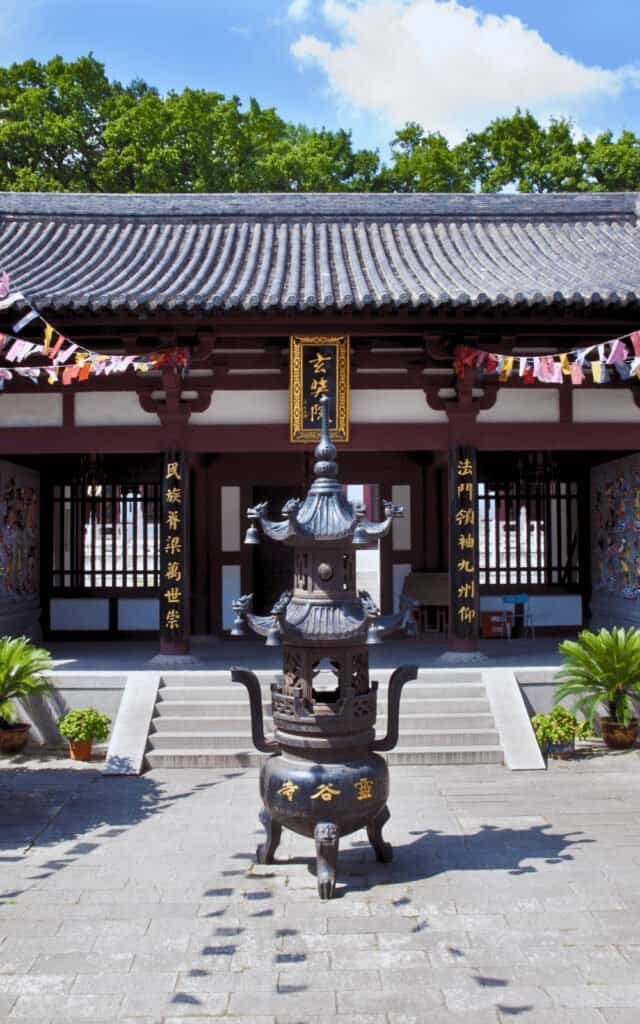
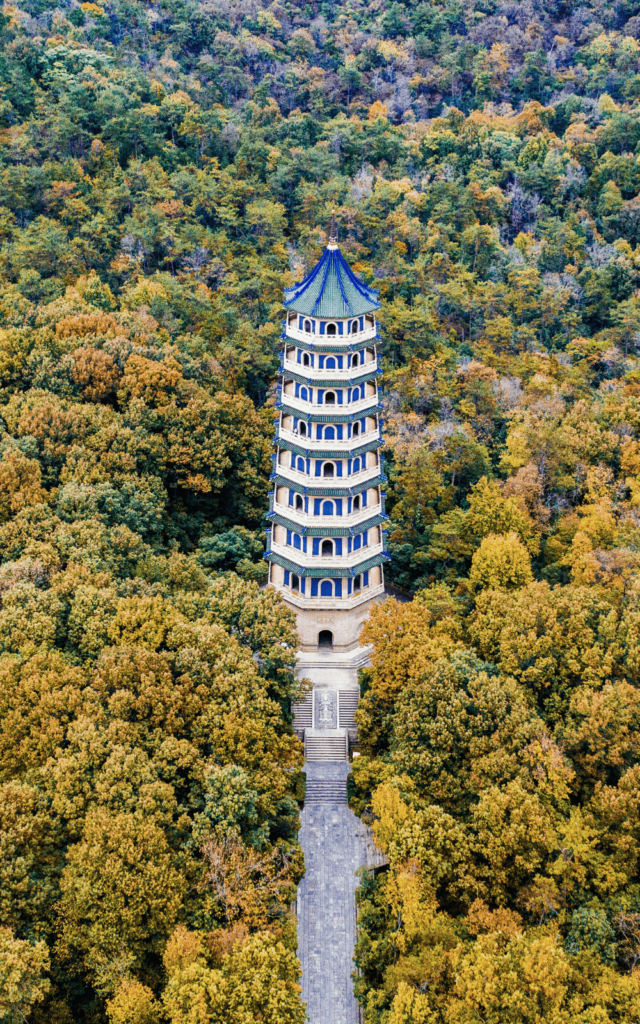
You’ll come across the unique Beamless Hall as you explore the grounds. Built during the Ming Dynasty entirely from brick and stone, it stands strong without a single beam for support.
A short walk uphill will take you to the Linggu Pagoda. This pagoda’s appearance catches your eye. Surrounded by greenery, it’s a great spot for photos or just to appreciate the view.
5. Fuzi Miao
🏷️ Ticket Price: Free.
Built originally during the Song Dynasty and rebuilt several times, Fuzi Miao—or the Confucius Temple—is a must-see in downtown Nanjing.
Today, it’s the perfect example of the Ming and Qing architectural styles. But it’s not just a temple, it’s part of a larger complex with plenty to explore. What brings this area to life is the Qinhuai River, with its charming red lanterns lining the banks and even weaving through the temple grounds.
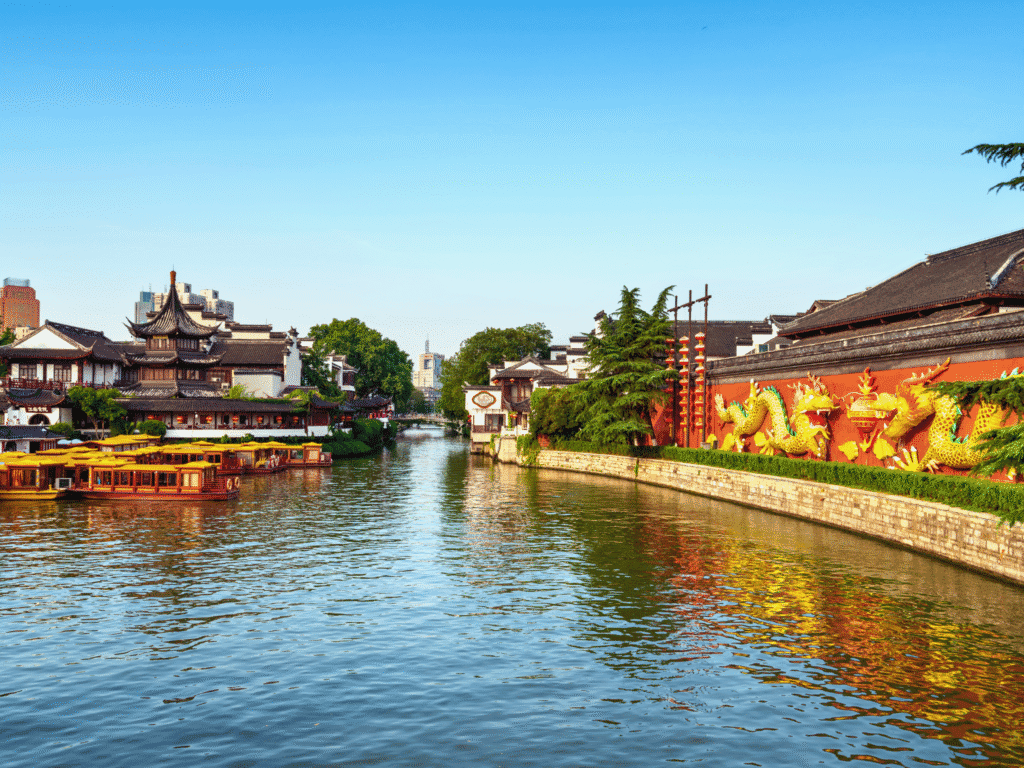
This spot is one of the busiest in Nanjing; you’ll catch the irresistible smell of street food as you stroll along streets filled with souvenir shops, vendors, and visitors snapping photos. It’s the perfect place for a late afternoon walk at sunset, followed by a classic Chinese dinner by the river.
Day 3: Jiuhuashan Park, Jiming Temple & Xuanwu Lake
6. Jiuhuashan Park
🏷️ Ticket Price: Free.
Jiuhuashan Park is one of Nanjing’s underrated gems. I feel like it doesn’t get as much attention as other sights, probably because of the steep path leading to the Sanzang Pagoda, but if you’re up for the climb, it’s absolutely worth it.
The trail winds steadily uphill, with a few stops along the way, including a quiet temple where you can take a short break and enjoy the atmosphere.
Once you reach the top, you’ll be rewarded with an incredible view: Purple Mountain in the distance, Xuanwu Lake below, the historic City Walls, and the Nanjing skyline unfolding around you. The best view of the city!
7. Jiming Temple
The Jiming Temple is the most visited Buddhist temple in Nanjing, and it’s easy to see why.
If you’re around in spring, the entire area around the temple and the Yaoshifo Pagoda turns into a cherry blossom park, making the atmosphere even more magical.
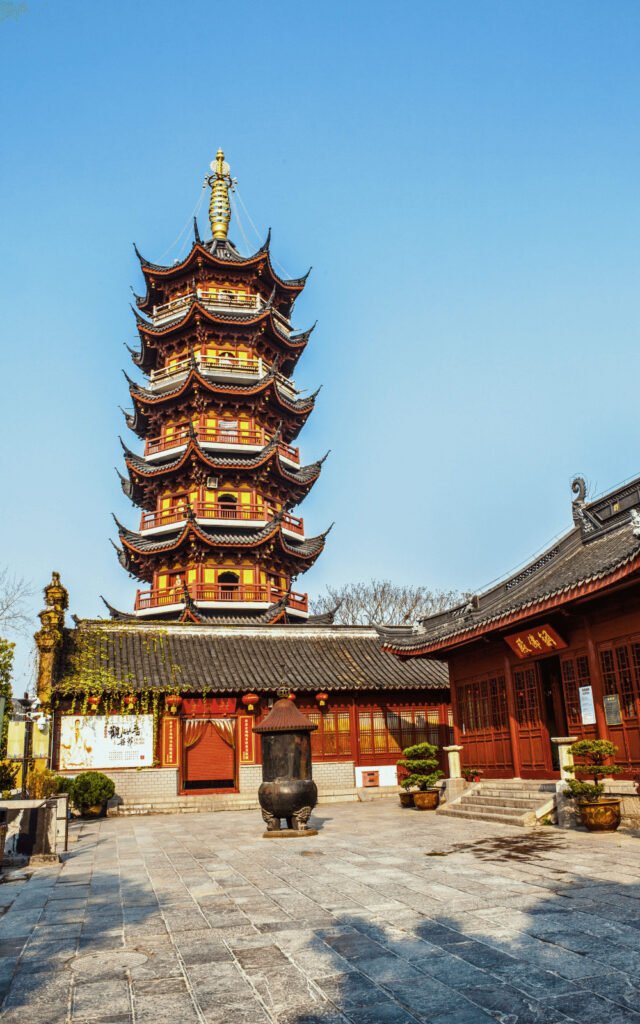
You can step inside the base of the pagoda, where hundreds of tiny golden Buddha statues are displayed in glass cases. It’s quiet, spiritual, and unique.
From up there, the view is beautiful: Xuanwu Lake stretches below you, and the ancient City Walls frame the scene in the distance.
8. Xuanwu Lake Scenic Area
If you enjoy strolling through beautiful, peaceful spots, the Xuanwu Lake area is the place to be.
The area has five small islands connected by bridges, with pagodas, Chinese-style gardens, pavilions, and teahouses scattered around.
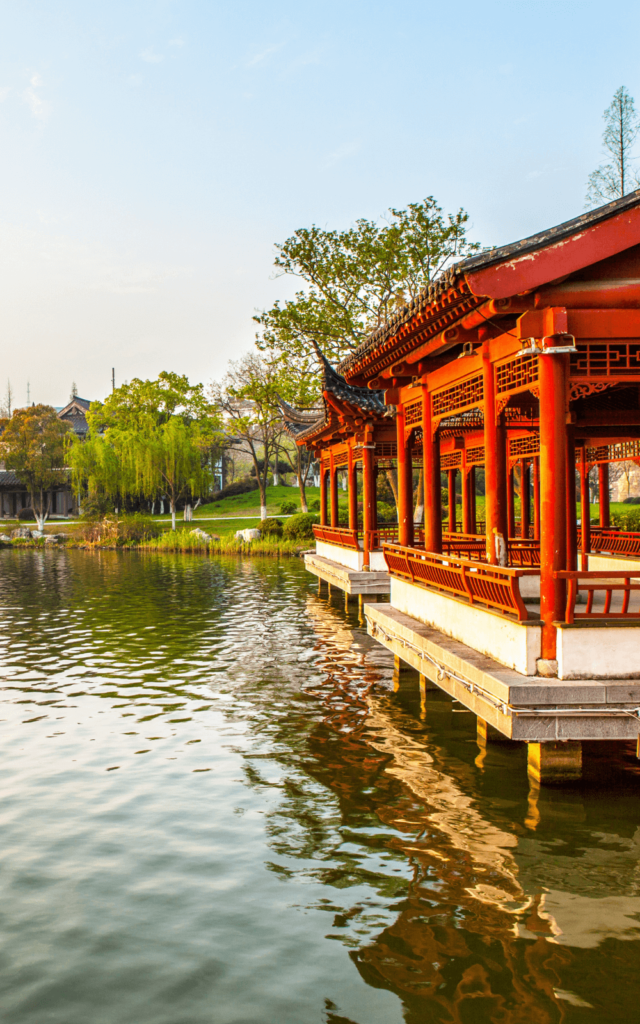
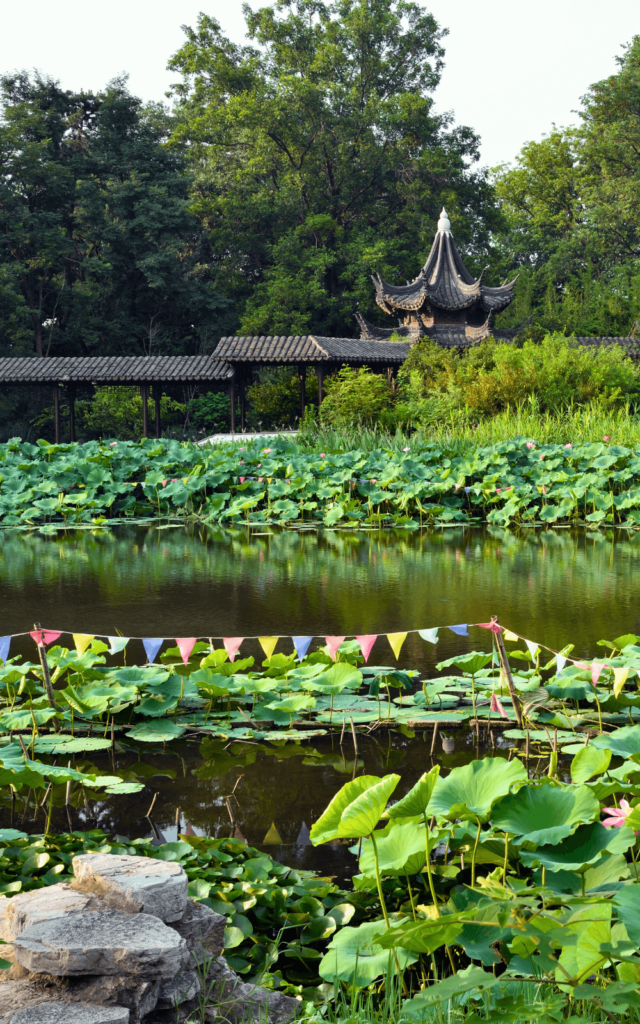
Once an imperial garden, Xuanwu Lake Park is now a calm city park, perfect for relaxing. In spring, cherry blossoms bloom, while summer brings lotus flowers and weeping willows. In fall, the trees turn red and gold with maples and ginkgos.
Each of the five islands has its charm: Liang Islet hosts the Lake God Temple and a Peony Garden, and Ying Islet is home to over 200 rare bird species.
There’s plenty to see and do here, with pagodas, pavilions, tea houses, a zoo, and boat rentals.
Extend Your Itinerary Beyond Nanjing
If you have around 7 days to explore the area around Nanjing, there are plenty of great ways to make the most of your trip. Hangzhou is just a couple of hours away by high-speed train, famous for its West Lake and peaceful vibes—definitely worth a visit.
Suzhou, with its canals and classical gardens, is another perfect day trip from Nanjing and offers an entirely different, relaxed atmosphere.
You could even plan a fantastic 7-day itinerary that includes four cities: Nanjing, Suzhou, Hangzhou, and Shanghai. They’re all close by, but each has its unique charm and history. This was the route I followed on my trip, and it’s a great way to discover different sides of eastern China.
Just like that, we have reached the end of this Nanjing Itinerary. Hopefully, this post will help you plan your Nanjing Itinerary as smoothly as possible. Enjoy your time there!
Did you find it helpful? 📌 Pinning is caring!
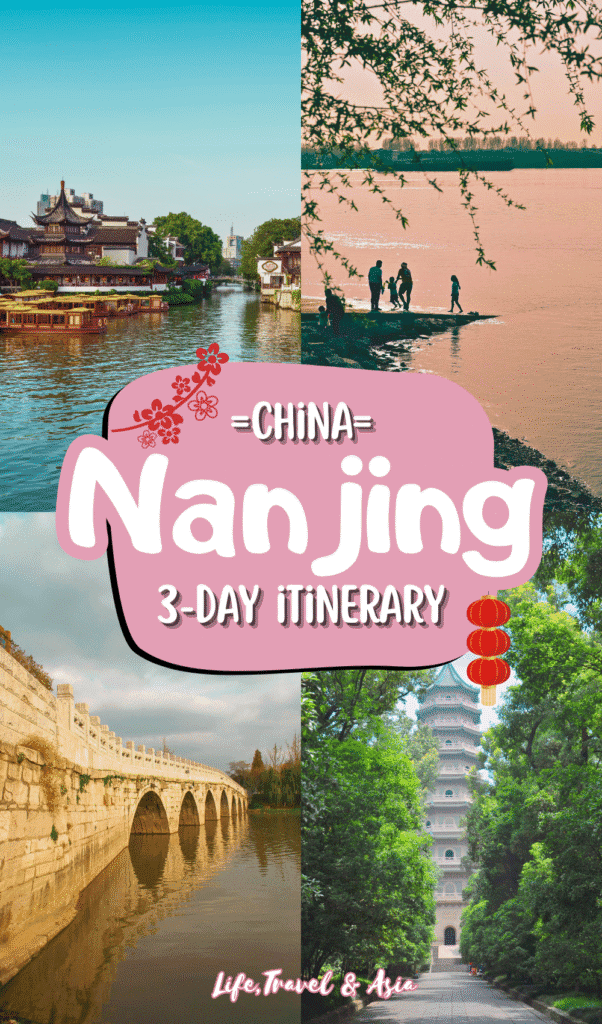
DISCLAIMER: These suggestions about the best Nanjing Itinerary are purely based on my experiences and thoughts and are meant to inspire and provide advice. Feel free to adapt it to your preferences—there is no need to follow it in detail. All prices, transport options, and instructions mentioned reflect my knowledge at the time of writing and may have changed since. You must double-check all the information before your trip to ensure accuracy. All opinions and recommendations are my own, rooted in my unique journey through China.

